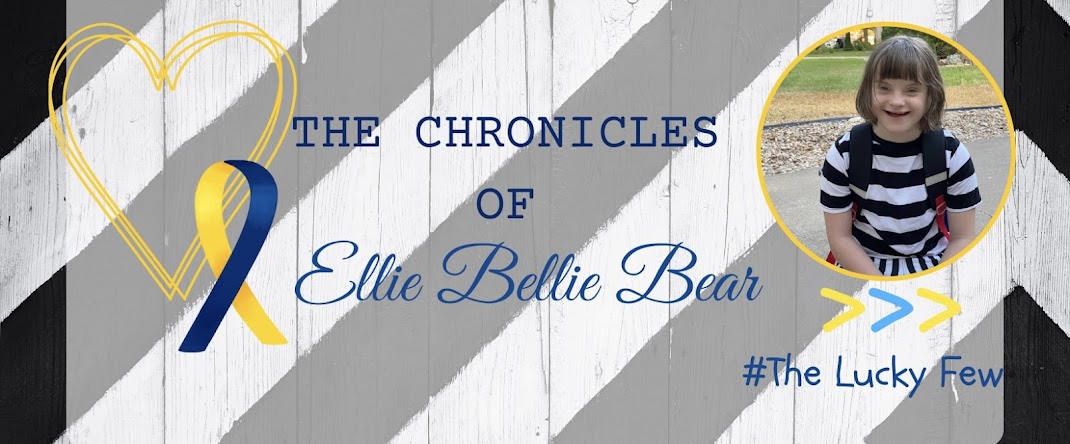As many of you know, children with Ds often have language delays. This can be related to low muscle tone of the cheeks and tongue, a high-arched palate, abnormal dentition and delayed teething, small midfacial features, and global developmental delays. This does not mean our children cannot communicate. Far from it!
Ellie Bellie Bear is a signer. What do I mean by that? She uses sign language to communicate her wants, needs, and opinions. Oh she has definite opinions alright! Where does she learn these signs? Where do I learn these signs. Yes, care providers need to understand signs as well as how to perform the signs in order to 1. teach the signs to our children and 2. to understand what exactly our children are trying to tell us.
I would like to Introduce Mey Lau of www.babysignlanguage.com
This fabulous and FREE website is an excellent resource for every parent--dictionary, printable flashcards, Facebook community, and a blog.
I absolutely love this chart!
 |
| Baby Sign Language Chart: http://www.babysignlanguage.com/chart/ |
Signing for Babies-Bridging the Communication Gap
by Mey Lau
Parents know it isn't long before babies start to form their own opinions. The desire to tell you when and what they want to eat, for example, will surface long before they can effectively verbalize their wants and needs. This communication gap can cause frustration for baby and parent alike, but for a child with Down syndrome this phase can last longer than most toddlers.
Signing for babies not only minimizes frustrations by allowing both parents and babies to get their point across, but it serves as a stepping- stone on the road to talking. Delays in speech development don't have to equate to a delay in communication. Sign language actually improves communication skills for children with Down syndrome. Since children understand language before they can verbalize, sign language bridges the communication gap as they progress neurologically toward the development of oral skills. You'll also be reinforcing baby's fine motor skills.
While there are other means of communication aside from speech and signing, there's no need to resort to tears and screams. Remember to keep sign language easy and fun and use it often.
Start Simple
While a large baby sign language vocabulary is a great goal, keep it easy in the beginning and always keep it fun! Pick your top three to five signs and don't jump into introducing more until those are well established. I recommend "eat" and "milk" as these fulfill a basic need for food and it is something you'll be doing often with your baby. Milk is often a first sign for babies because it is easy to do and it is exciting, too. It's not uncommon to see babies opening and closing fists with both hands when they catch a glimpse of their bottle.
 |
| Signing "Milk" http://www.babysignlanguage.com/dictionary/m/milk/ |
Repetition
Another reason the signs associated with eating are a great start is because you'll be using them often. Repetition is key to learning new signs and don't forget to also speak the word. Research has shown that the use of simultaneous signs supports the formation of verbal language. You can also use the sign and verbal cue before, during and after the activity.
 |
| Milk Printable Flashcard http://www.babysignlanguage.com/flash-cards/m/milk/ |
Even after oral language skills develop, sign language is an excellent tool for emphasis or clarification when a message isn't completely understood. A child with Down syndrome doesn't have to feel any extended frustration when their verbalization takes longer to appear than for most toddlers. Before you know it, baby will be specifying pear juice instead of the apple juice with signs.
Love
Regardless of the task at hand when it comes to teaching our babies and infants, we must not forget that the main objective of communication with our children is to be able to express our love and allow them to express their needs. In doing this, we will be rewarded by a wonderful bonding experience.
This article is a gift for Ellie and friends from the babysignlanguage you can join the conversation at our Facebook Community we would love to have you there.


No comments:
Post a Comment
I love your comments and I read each and every single one of them.